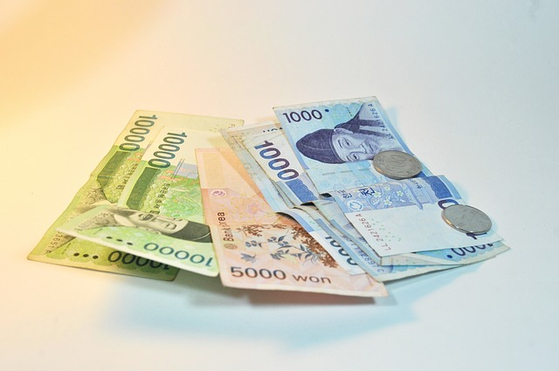
The spread of the new coronavirus infection (Corona 19) has resulted in an increase in the lifespan of various bills distributed in Korea. Photo pixabay
The spread of the novel coronavirus infection (Corona 19) has resulted in an increase in the life of bills distributed in Korea. As the use of face-to-face services decreased due to the strengthening of social distancing, the opportunity to use banknotes decreased.
According to the Bank of Korea on the 7th, the lifespan of banknotes (bills) circulated in Korea last year increased by up to one year from the previous year. The shelf life of bills refers to the time it takes for bills issued at the Bank of Korea window to be damaged after being circulated in the marketplace. The shelf life of banknotes is usually determined by the durability of the banknote itself, the habits of citizens’ use of money, and the frequency of use.
One of the reasons for the increased durability of banknotes is analyzed by the spread of Corona 19. This is because the opportunity to use cash has decreased by that amount due to social distancing measures to prevent infectious diseases. In addition, the increased tendency to use debit cards or fintech payments instead of cash also contributed to the increase in bill life.
The Bank of Korea analyzed that “the reason for the increase in the circulation life of banknotes is that non-face-to-face transactions have increased due to the spread of Corona 19. There is also a reason why non-cash payment methods have increased recently and demand for safe asset storage has increased.”
The bill with the longest shelf life was 50,000 won, which was 174 months, which was 12 months longer than the previous year (162 months). Then, the distribution life increased in the order of 5,000 won (49 months → 60 months), 1,000 won books (53 months → 60 months), and 10,000 won (127 months → 130 months).
The circulation life of Korea’s highest faced bills (50,000 won) is the fifth longest after the UK, Australia, the US and Switzerland. The Bank of Korea explained, “The maximum face value of major foreign countries is mainly used as a means of storing value, while the 50,000 won note in Korea is used for personal transactions such as commerce, congratulations and condolences, and pocket money, so the distribution life is relatively short.”
Reporter Yoon Sang-eon [email protected]
